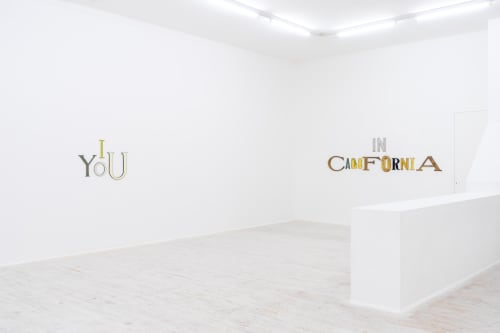A classical artist living in New York, the centre of the most extreme contemporaneity, may sound curious. It sounds even more curious that, even though Pierson’s works of art harmonically converse with Greek/Roman culture, they are created with contemporary materials and techniques.
Greek Classical Art lived on pathos, on heroes’ naked bodies, masculine and seductive, on frowning divinities and melancholy warriors, exactly like Pierson’s photographs, even his early works, are dedicated to men in their prime, happily Dionysian before the artist’s eyes.
Roman Classical Art imposed its dominion through the imposition of words carved on every building of its vast Empire, exactly like Pierson’s sculptures, made of letters and words, are the inevitable children of the American Empire, expanding not only through its goods, but also, above all, through its slogans. Nonetheless, the Artist’s confidence with classical art does not come from academical attention. It is not a reference, but rather a biographical vitalism: the desire to see naked bodies, as beautiful as statues, and the ability to see the flip side of the American imperial dream.
The famous writings, created in the early Nineties, are made with letters from disused signs, recovered from landfills scattered in every corner of the American territory. Rubble of meaning and discourses, of advertisements and propaganda, reshaped in evocation of freedom by the hands of the Artist.
In his exhibition, Pierson presents some new and iconic “word pieces”. One gives the exhibition its title, “FREE YOURSELF”, and it reflects on the fact that the desire to be free is the beginning of every form of freedom. Another work, “IN CALIFORNA”, underlines the ideal and utopic space in which such freedom takes place, while “A FORLORN GODDESS” reminds us that there is always an implicit sense of tragedy in the Empire’s power and in the glamorous shine of celebrities.
The classical aesthetical dimension lies in the ability to conjugate Defeat and Beauty, Hope and Tragedy, and to do so naturally, without intellectual superstructures, but instead with the simplicity of a gesture and a gaze.

